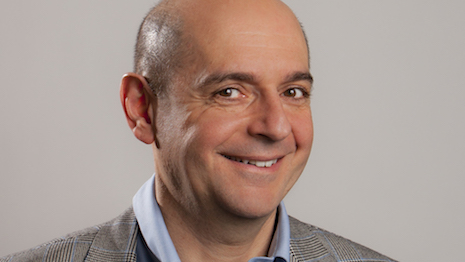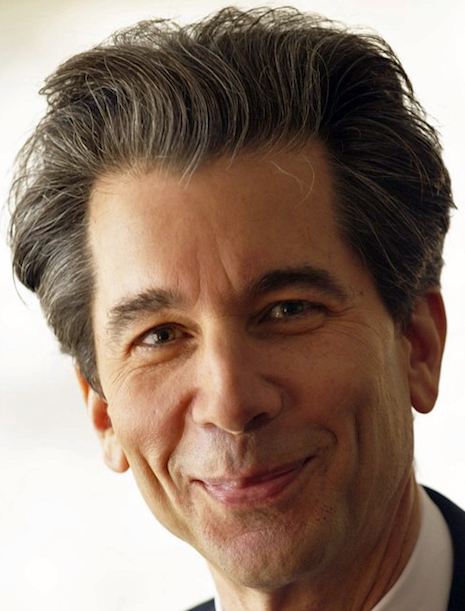- About
- Subscribe Now
- New York,
November 20, 2018

 Spinning in circles? Image credit: Deloitte
Spinning in circles? Image credit: Deloitte
By Benjamin Finzi, Vincent Firth and Mark Lipton
In our last article on disruption in the luxury sector, we looked at some of the threats facing traditional luxury companies – the encroachment of online pure-play newcomers, the radical shift among young consumers preferring access over ownership, i.e. renting rather than buying luxury, social movement disruptors such as NoLogo, and the intractable mindset of the legacy companies themselves.
We also began discussing some of the attributes that constitute an attitudinal shift in leadership, which we call the “Undisruptable CEO.” This new model could provide food for thought in terms of how luxury companies, indeed all companies, can navigate the roiling waters of constant disruption.
In this article, we would like to go into a bit more depth on this leadership model.
 Benjamin Finzi is managing director and co-leader of Deloitte’s CEO Program
Benjamin Finzi is managing director and co-leader of Deloitte’s CEO Program
In the course of carrying out our research, we spoke with CEOs of the some of the world’s largest and most complex companies.
We studied the attributes to which they aspire, key characteristics they believe would enable them to direct a course through whatever disruption comes their way, and still prevail.
In our research, we narrowed these down to five attributes. Here we will look at these traits highlighted by the CEOs we studied, and how they might apply to CEOs of luxury companies.
Undisruptable leadership is ambidextrous with high EQ
Central to the five characteristics of undisruptability that our CEOs discussed is the willingness to embrace ambidexterity.
In our last article, we touched on the juggling act required by legacy luxury companies to keep both their longtime loyal customers and the needs of a new generation of customers in mind at the same time.
To embrace ambidexterity means to relentlessly and simultaneously execute optimizing strategies – continuing to cultivate and refine the traditional luxury experience – and exploration – reinvent by delivering through new business models or by introducing creative edginess and tension— across the entire organization.
For CEOs to stay ahead of the curve, they need to constantly enhance current operations and concurrently explore new frontiers.
Continuing to craft fine luxury products while simultaneously answering to the incursion of luxury-for-rent, luxury online, techno-luxury, or a No Brand movement that seeks to wipe traditional companies off the map, is no easy feat.
The stakes get even higher when you think about external stakeholders, e.g. investors, who want CEOs to deliver short-term yields, yet expect them to work for the long term, take risks, and innovate.
 Vincent Firth is managing director with Monitor Deloitte and Deloitte Consulting LLP, and co-leader of Deloitte’s CEO Program
Vincent Firth is managing director with Monitor Deloitte and Deloitte Consulting LLP, and co-leader of Deloitte’s CEO Program
In luxury, particularly, leaders with whom we spoke believe they can build toward undisruptability by cultivating emotional fortitude. They talked about the importance of acknowledging the real fear of the rapidly changing landscape.
But then, it was a matter of learning to use that fear as fuel to make unlikely bets on new ways to experience luxury and to stick with them through the initial skepticism and failure.
In luxury, emotions often run high with these very fears, on multiple fronts.
Undisruptable leaders grow their inner strength to take risks that might result in them disrupting their own companies. But at the same time, with passion and intensity, they are inventing new strategies. They also do it with the foreknowledge that some of those new paths may fail.
How to know your customer deeply
Many prestigious and long-established luxury brands have started to get to know their younger customers by making inroads into the world of omnichannel retail. But we believe they have to go much further. And this is made possible by a total attitudinal makeover at the leadership level.
When it comes to understanding the consumer, CEOs in our study described the need to become the ultimate end-user ethnographer of their customers.
For CEOs, this means gaining a better understanding not only of their customers’ needs and attitudes, but insight into their most subtle habits, desires and subconscious concerns to be able to match them to new forms of “possible.”
For the luxury sector, this means balancing the use of technology, data and continuous communication with those time-honored production methods and materials that confer that mystique of luxury in the first place.
On the communications front, the rise in both numbers and affluence of younger consumers has meant a rise in digital, mobile and social connectivity.
Simultaneously, this new consumer cohort has changed the character of luxury consumption to a more varied, personalized and tech-savvy set of aspirations.
Consider that among millennials, smart watches are more desirable than traditional analog watches from iconic luxury brands.
Millennials need to differentiate themselves from the previous generation. They are at ease with technology, and less at ease with conspicuous finery.
Some disruptive brands have capitalized on these needs by creating minimalist luxury within technology.
Contrast this with the incumbent luxury watch brand that rides on the concept of passing on a treasured timepiece from one generation to the next – a heavy legacy to throw at millennials, a generation that prefers to be unencumbered by physical assets.
On the renting luxury front, there is clear evidence that luxury is no longer only for the rich, though it has been, and remains aspirational.
Take, for example, short-term apartment rental companies that are starting to make short-term luxury rentals an offering.
How can luxury brands answer to this new, highly complex set of aspirational consumer expectations, while not losing sight of the older, more traditionally affluent consumer base that built them in the first place?
 Mark Lipton is graduate professor of management at The New School in New York, author and an eminence and content strategy contributor for Deloitte’s CEO Program
Mark Lipton is graduate professor of management at The New School in New York, author and an eminence and content strategy contributor for Deloitte’s CEO Program
LUXURY’S LEADERS should consider diving deeply into studying their customers, fully addressing the ambiguity of these intergenerational differences.
Luxury thus faces the paradox of needing to connect with its changing consumer base by innovating and responding to a highly modern, technological environment while maintaining the vision of fine craftsmanship and high-quality exclusivity.
Furthermore, leaders will likely need to respond with another apparent paradox by bringing creative chaos into their organizations and understanding fully that failure, while inevitable, also serves as a beacon pointing the way ahead.
Developing a culture where ambiguity and ambidexterity are embraced may be the best prescription for finding new ways to move forward.
Benjamin Finzi is New York-based managing director and co-leads Deloitte’s CEO Program. Reach him at bfinzi@deloitte.com.
Vincent Firth is Philadelphia-based managing director with Monitor Deloitte and Deloitte Consulting LLP, and co-leads Deloitte’s CEO Program. Reach him at vfirth@deloitte.com.
Mark Lipton is New York-based graduate professor of management at The New School in New York, author and an eminence and content strategy contributor for Deloitte’s CEO Program. Reach him at mark@marklipton.com.
Additional support from Jean-Emmanuel Biondi, Atlanta-based principal with Deloitte Consulting LLP and the fashion lead for Deloitte’s retail and consumer products practice. Reach him at jebiondi@deloitte.com.
Share your thoughts. Click here